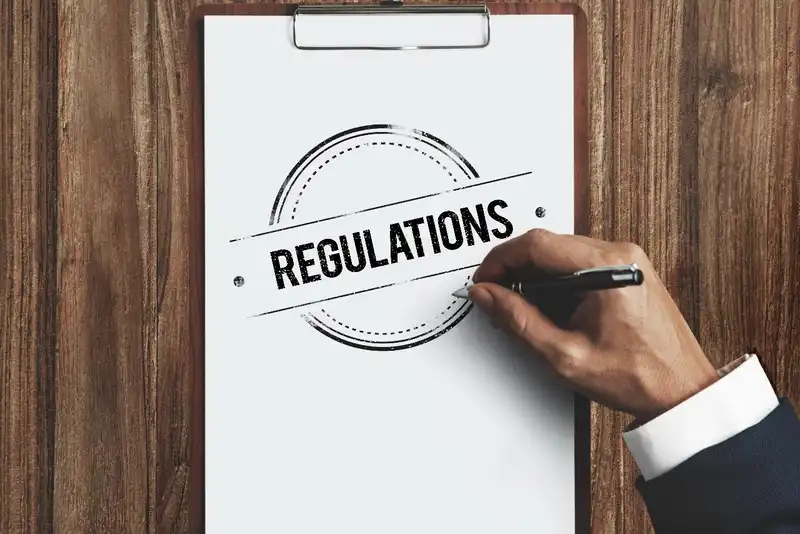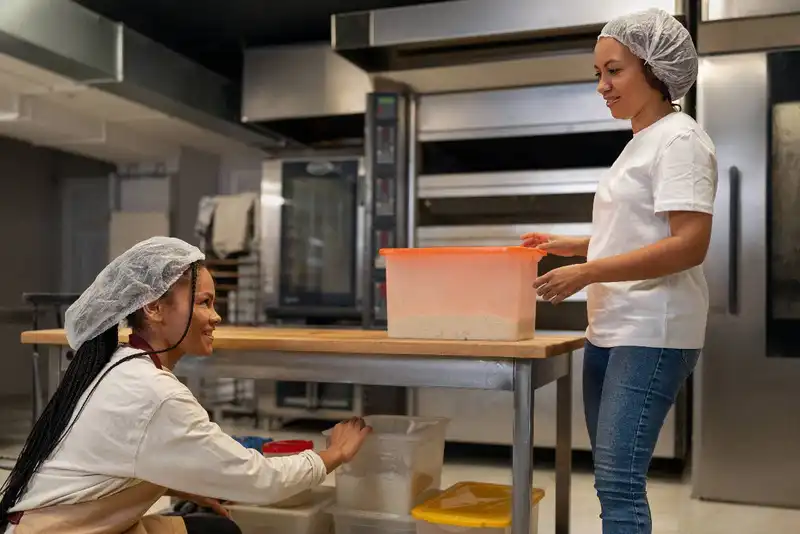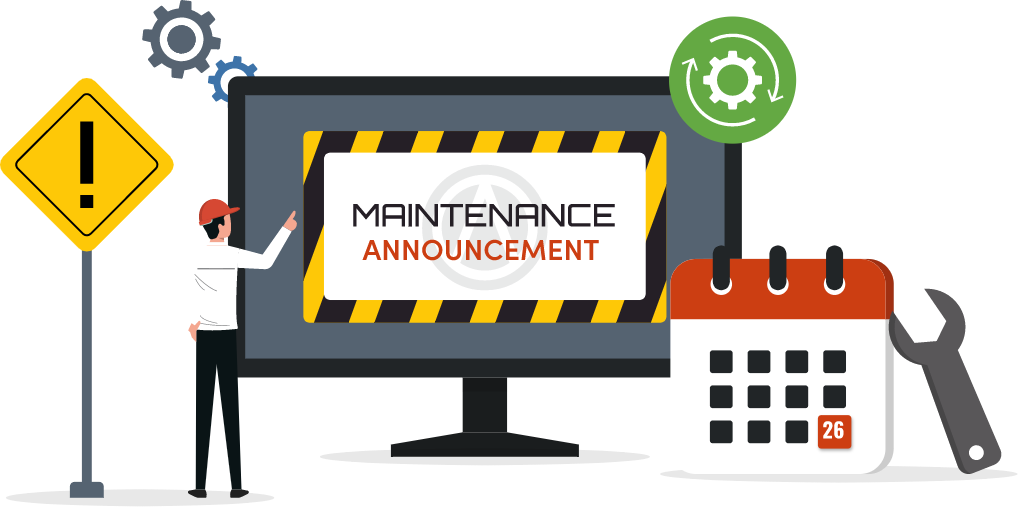Which federal agencies regulate food safety in restaurants?
The FDA (Food and Drug Administration), USDA (U.S. Department of Agriculture), CDC (Centers for Disease Control and Prevention), and OSHA (Occupational Safety and Health Administration) all play important roles in regulating and monitoring food safety practices.
Food Safety Standards Every Restaurant Owner Must Know in 2025
Overview
In 2025, food safety isn't just a regulatory checkbox - it's a cornerstone of running a trusted, profitable restaurant. Guests expect not only great flavors and quick service but also the peace of mind that every meal is handled with care. For owners, that means keeping up with evolving food safety standards at the federal, state, and local levels.
The stakes are high. The CDC estimates that roughly 48 million Americans get sick from food-borne illnesses each year, leading to millions of doctor visits and thousands of hospitalizations. For restaurants, even a single violation can trigger fines, shutdowns, or reputational damage that's hard to recover from. Compliance isn't optional - it directly impacts your bottom line.
This year brings important regulatory updates that every operator should know. From revised handling rules and temperature guidelines to new employee training requirements, 2025 sets a higher bar for accountability. The good news? By understanding the layers of oversight - federal, state, and local - you can create systems that keep your kitchen compliant, your team prepared, and your guests safe.
Federal Oversight

Federal agencies provide the foundation for food safety regulations in the U.S., and every restaurant owner must understand their influence. Here's a breakdown of the most important players and what they mean for your operations in 2025 -
1. Food and Drug Administration (FDA) - The FDA enforces the Food Safety Modernization Act (FSMA), which focuses on prevention rather than reaction. In 2025, the FDA requires stricter supply chain tracking and more detailed safety documentation. Restaurants need to be ready to show clear records on sourcing, storage, preparation, and service practices.
2. U.S. Department of Agriculture (USDA) - The USDA oversees meat, poultry, and certain egg products. This year, it has emphasized stronger labeling rules and more rigorous inspection protocols. Ground meats and ready-to-eat products are under particular scrutiny, meaning restaurants should verify suppliers and maintain accurate records.
3. Centers for Disease Control and Prevention (CDC) - While the CDC doesn't regulate restaurants directly, it tracks outbreaks and provides guidance when specific products are linked to illnesses. Staying up to date with CDC alerts helps restaurants act quickly if a high-risk ingredient enters the supply chain.
4. Occupational Safety and Health Administration (OSHA) - OSHA focuses on workplace safety, which indirectly impacts food safety. Updated sanitation practices, protective equipment, and proper handling rules ensure that employees maintain safe working conditions while minimizing contamination risks.
By staying aware of these four federal agencies and their updated requirements, restaurant owners can build a compliance framework that keeps operations smooth, inspections manageable, and guests safe.
Elevate Food Safety, Simplify Compliance!
Experience Seamless Food Safety with Altametrics!
State-Level Regulations
While federal agencies provide the framework for food safety, state governments add another important layer of regulation. For restaurant owners, this means that compliance doesn't stop with FSMA or USDA rules - you also need to be aware of the specific requirements in the state where you operate. In 2025, many states have updated their health codes to reflect new risks, technologies, and consumer expectations, creating a patchwork of rules that vary widely across the country.
One of the most common differences between states involves temperature control and storage requirements. For example, some states are now enforcing stricter "time as a public health control" rules, limiting how long certain foods can be held outside refrigeration before being served. Others have lowered acceptable temperature thresholds for hot and cold holding to add an extra margin of safety.
States also regulate employee certifications. While most require food handler cards and manager-level training, the length of certification validity and the required testing can differ. In 2025, states like California and Illinois have shortened certification renewal cycles to ensure workers stay current on best practices.
Another area of variation is allergen labeling and menu transparency. Some states are mandating clearer identification of common allergens on menus, going beyond the federal baseline. This adds an extra step for multi-location operators, who may need to adapt menus differently in each state.
For restaurants with multiple units across state lines, the challenge is magnified - you must track and implement policies that align with each jurisdiction. The best approach is to centralize compliance tracking, so your team isn't relying on guesswork. By staying informed about state-level updates, you not only protect your license but also build trust with regulators and customers who expect consistent, safe practices no matter where they dine.
Local Health Codes
Beyond federal and state requirements, every restaurant must also follow local health codes set by counties and municipalities. These rules are often the most visible to operators because local health departments are the ones conducting on-site inspections, issuing grades or scores, and determining whether a restaurant can continue operating. In 2025, local authorities have sharpened their enforcement efforts, making it essential for owners to understand how local standards differ from broader regulations.
Local codes often dictate inspection frequency. While some jurisdictions inspect restaurants once or twice a year, others use a risk-based approach, visiting more frequently if a restaurant handles high-risk foods or has a history of violations. In many areas, inspection results are now published online or posted at the restaurant entrance, meaning a poor score can instantly affect customer trust and foot traffic.
Common areas of focus during local inspections include hand-washing practices, equipment sanitation, pest control, and food storage methods. Inspectors also look closely at temperature logs, employee hygiene, and how cleaning chemicals are stored. Even small oversights, like improper labeling of containers or missed sanitizer checks, can lead to point deductions or citations.
Another area of local control is permitting and zoning. Some municipalities require additional licenses for outdoor dining, food trucks, or catering operations, with corresponding food safety standards that differ slightly from dine-in regulations.
For restaurant owners, the key is preparation. Conduct regular self-inspections using the same checklists local authorities rely on. Train staff to treat every shift as if an inspector could walk in. By doing so, you not only avoid fines and closures but also signal to customers that safety is woven into your daily operations, not just when inspections are due.
Food Handling and Storage Standards

Safe food handling and proper storage are the backbone of compliance. In 2025, regulatory updates have placed even more emphasis on controlling time and temperature, preventing cross-contamination, and ensuring clear labeling and rotation practices in restaurant kitchens. These rules may seem strict, but they are designed to address the most common causes of food-borne illness.
The most significant updates involve temperature control. Cold foods must be kept at or below 41F (5C), while hot foods must remain at 135F (57C) or higher. Some states and municipalities have reduced the tolerance for "danger zone" time, requiring foods to be discarded if held between 41F and 135F for more than four hours - or in some cases, two hours for high-risk items. Restaurants must also log temperatures more consistently, using either digital thermometers or automated monitoring systems.
Cross-contamination prevention remains another top priority. This includes using color-coded cutting boards and utensils, ensuring raw meats are stored on lower shelves away from ready-to-eat items, and sanitizing prep areas between tasks. Regulators are increasingly expecting to see clear SOPs for these practices, not just verbal assurances from staff.
Labeling and rotation rules are also stricter. All prepped or opened foods must have a visible label with the prep date and discard date. The industry standard of "FIFO" (first in, first out) is now explicitly required in many jurisdictions, with inspectors checking whether staff follow it consistently.
By tightening up handling and storage practices, restaurants not only stay compliant but also reduce waste, lower costs, and build guest confidence. A disciplined approach ensures food safety isn't left to chance - it becomes part of the daily rhythm of operations.
Employee Training and Certification Requirements
Even the best-written food safety policies are only as effective as the employees who carry them out. In 2025, regulators are tightening expectations around training and certification, making it clear that every staff member - front of house and back of house - must have a working knowledge of food safety standards. For restaurant owners, this means investing in structured, ongoing education rather than one-time orientation sessions.
At the most basic level, most states now require employees to hold a food handler card, often earned through programs like ServSafe or equivalent state-approved training. These certifications cover essentials such as personal hygiene, temperature control, cross-contamination prevention, and proper cleaning methods. While these requirements aren't new, several states have shortened certification renewal cycles from five years to three, ensuring staff remain up to date with current best practices.
Manager-level employees are expected to go further, completing food protection manager certification courses that involve proctored exams and a deeper understanding of HACCP principles. In some states, at least one certified manager must be present during all hours of operation, making it critical to train multiple supervisors to avoid coverage gaps.
Beyond certifications, regulators are focusing on continuous training and documentation. This means restaurants must keep detailed records of employee training sessions, refresher courses, and corrective actions when violations are observed. Digital platforms now make it easier to log training dates and upload certificates, which can be presented during inspections.
By prioritizing staff education, restaurants not only meet regulatory requirements but also reduce mistakes that can lead to food-borne illness, fines, or closures. More importantly, well-trained employees build a culture of accountability - where safe food handling is second nature, not a compliance chore.
Technology and Compliance Tools
Managing food safety compliance across multiple regulatory layers can feel like a full-time job. In 2025, technology offers restaurant owners practical tools to simplify the process, reduce errors, and maintain accurate records for inspections. Below are the key areas where technology is making the biggest impact -
1. Digital Checklists
Paper logs are often incomplete, misplaced, or filled out inconsistently. Digital checklists ensure every task - such as sanitizing equipment, logging food temperatures, or completing end-of-day cleaning - is recorded with a time stamp. Many platforms also send automatic reminders, reducing the risk of missed steps.
2. IoT Temperature Monitoring
Smart sensors continuously track refrigeration and hot-holding equipment, sending alerts if temperatures move outside safe ranges. This not only prevents costly spoilage but also creates a record inspectors can review to verify compliance.
3. POS and Back-Office Integration
Modern POS and management software now link directly to food safety tasks. For example, inventory systems can highlight items nearing expiration, while scheduling tools ensure that certified managers are always present on duty. These integrations align operations with compliance requirements.
4. Automated Record-Keeping
Digital tools simplify audits by organizing logs, certifications, and inspection histories in one place. Instead of scrambling for paperwork during an inspection, owners can provide regulators with instant access to accurate records.
By leveraging these tools, restaurants can build a more reliable and transparent compliance system. Technology doesn't replace training or accountability - it strengthens them, allowing owners to focus on guest service while knowing food safety is consistently upheld.
Building a Proactive Safety Culture in 2025
Regulations, checklists, and inspections are essential, but true compliance goes beyond paperwork. In 2025, restaurants that thrive are those that embed food safety into their culture, making it a shared responsibility for every employee - not just managers or health inspectors.
A proactive safety culture starts with leadership commitment. When owners and managers consistently model proper food handling, sanitation, and record-keeping, employees understand that safety is a non-negotiable standard. Training then reinforces these expectations, but the real shift happens when staff see food safety as part of their daily routine, not just a task for inspection day.
Another critical element is accountability. Each team member should know their specific role in maintaining safety, whether it's monitoring storage temperatures, labeling prep containers, or following allergen protocols. Clear communication and regular feedback help reinforce these responsibilities.
Recognition and reinforcement also play a role. Praising staff for following safety procedures or catching mistakes early creates positive reinforcement, while ongoing refresher training ensures knowledge doesn't fade. Over time, these habits reduce violations, improve efficiency, and reassure guests that your restaurant takes their health seriously.
By fostering this kind of proactive culture, restaurants not only comply with federal, state, and local regulations but also build long-term trust with customers and employees alike.
Building a strong food safety culture takes more than training - it requires the right systems to support consistency and accountability. With Altametrics you can digitize food safety checklists, automate temperature monitoring, and centralize compliance records. Give your team the tools to succeed and protect your guests with confidence by clicking "Book a Demo" below.
Stay Compliant, Elevate Your Business!
Discover Altametrics for Effortless Compliance Management



































































































































































































































































